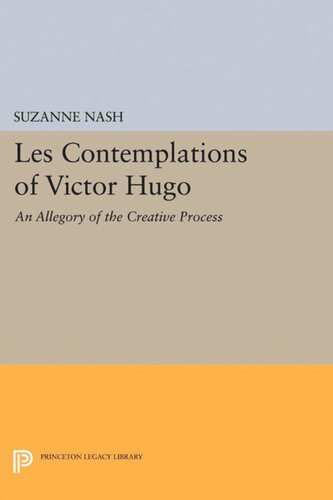

Most ebook files are in PDF format, so you can easily read them using various software such as Foxit Reader or directly on the Google Chrome browser.
Some ebook files are released by publishers in other formats such as .awz, .mobi, .epub, .fb2, etc. You may need to install specific software to read these formats on mobile/PC, such as Calibre.
Please read the tutorial at this link: https://ebookbell.com/faq
We offer FREE conversion to the popular formats you request; however, this may take some time. Therefore, right after payment, please email us, and we will try to provide the service as quickly as possible.
For some exceptional file formats or broken links (if any), please refrain from opening any disputes. Instead, email us first, and we will try to assist within a maximum of 6 hours.
EbookBell Team

4.1
60 reviewsVictor Hugo's work presents the reader with a paradox nowhere more apparent than in the collection of more than 150 lyric poems entitled Les Contemplations. Although he insisted upon structural unity, his complex artistic creations often seem disordered and digressive. Suzanne Nash examines this contradiction, and she proposes here a new approach to Les Contemplations that reveals how it may be read as a unified allegory of Hugo's understanding of the creative process.
The author's reading heightens the subtleties of individual poems by placing them within the context of the collection. She clarifies the poet's use of rhetorical devices and. illuminating Les Contemplations as a metapoetic creation, shows how it can serve as a guide to Hugo's other works.
The first two chapters present evidence of Hugo's narrative intention, place his work within an allegorical tradition, and describe the structure of the allegory. One poem, Pasteurs et troupeaux, is analyzed as a paradigm for the whole, and a single theme, that of Léopoldine as sacrificial muse and figure for poetic language, is traced through the six books. The author demonstrates Hugo's narrative purpose in his use of rhetorical forms and examines (according to predominance of themes, images, and technical devices) the six chapters as steps in the religio-poetic allegory.
Originally published in 1977.
The Princeton Legacy Library uses the latest print-on-demand technology to again make available previously out-of-print books from the distinguished backlist of Princeton University Press. These editions preserve the original texts of these important books while presenting them in durable paperback and hardcover editions. The goal of the Princeton Legacy Library is to vastly increase access to the rich scholarly heritage found in the thousands of books published by Princeton University Press since its founding in 1905.